-
 Bitcoin
Bitcoin $108,338.0981
-0.13% -
 Ethereum
Ethereum $2,566.4077
1.16% -
 Tether USDt
Tether USDt $1.0001
-0.01% -
 XRP
XRP $2.2841
-2.59% -
 BNB
BNB $658.5241
-0.17% -
 Solana
Solana $150.3819
-1.08% -
 USDC
USDC $0.9999
-0.01% -
 TRON
TRON $0.2864
-0.24% -
 Dogecoin
Dogecoin $0.1694
0.24% -
 Cardano
Cardano $0.5813
-0.72% -
 Hyperliquid
Hyperliquid $37.8292
-4.60% -
 Bitcoin Cash
Bitcoin Cash $503.3593
1.69% -
 Sui
Sui $2.8784
-0.69% -
 Chainlink
Chainlink $13.4784
-0.43% -
 UNUS SED LEO
UNUS SED LEO $9.0793
-0.27% -
 Stellar
Stellar $0.2537
-0.41% -
 Avalanche
Avalanche $18.0047
-0.23% -
 Shiba Inu
Shiba Inu $0.0...01181
1.56% -
 Hedera
Hedera $0.1608
0.49% -
 Toncoin
Toncoin $2.7568
-0.93% -
 Litecoin
Litecoin $86.4121
-0.20% -
 Monero
Monero $313.7273
-0.86% -
 Polkadot
Polkadot $3.3715
-0.66% -
 Dai
Dai $1.0001
0.01% -
 Ethena USDe
Ethena USDe $1.0004
0.03% -
 Bitget Token
Bitget Token $4.2902
-0.54% -
 Uniswap
Uniswap $7.5361
2.73% -
 Aave
Aave $285.6090
-0.55% -
 Pepe
Pepe $0.0...09958
0.28% -
 Pi
Pi $0.4560
-0.65%
How to check the transaction status when transferring money in Ethereum wallet?
2025/03/24 20:56
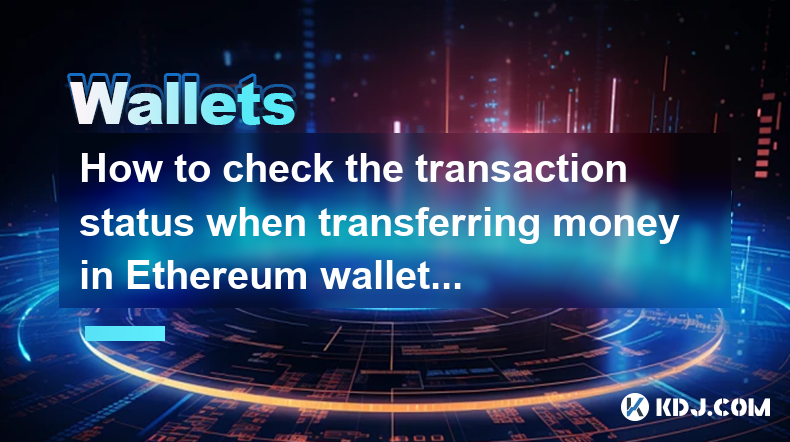
How to Check the Transaction Status When Transferring Money in an Ethereum Wallet?
Transferring Ether (ETH) or ERC-20 tokens on the Ethereum network involves several steps, and monitoring the transaction's progress is crucial. The speed and confirmation time vary significantly depending on network congestion and the gas fee you set. Understanding how to track your transaction is therefore essential to avoid unnecessary worry and ensure your funds arrive safely.
Understanding Ethereum Transactions
Unlike traditional banking systems, Ethereum transactions aren't instantly processed. They're included in blocks, which are added to the blockchain sequentially by miners. This process takes time, and the confirmation time depends heavily on the network's current activity. A higher gas fee generally leads to faster processing, as miners prioritize transactions with higher fees.
Methods to Check Transaction Status
There are several ways to track your Ethereum transaction status, each offering different levels of detail.
- Using Your Wallet's Interface: Most Ethereum wallets (like MetaMask, Trust Wallet, Ledger Live) provide built-in transaction trackers. After initiating a transfer, the wallet typically displays the transaction hash (a unique identifier). Clicking on this hash will show the transaction's status – pending, confirmed, or failed. The interface usually displays the transaction's progress in real-time.
- Using Block Explorers: Block explorers are websites that provide a detailed view of the Ethereum blockchain. Popular options include Etherscan, Blockscout, and others. You can enter your transaction hash into these explorers to see its current status, including the block it's been included in (if confirmed), the gas used, and the transaction fee. These explorers offer a comprehensive overview, often surpassing the detail provided by your wallet.
- Using Third-Party Transaction Trackers: Some third-party services specialize in tracking cryptocurrency transactions. These platforms aggregate data from multiple block explorers, offering a convenient way to monitor your transactions across different blockchains, not just Ethereum. However, always verify the legitimacy of any third-party service before using it.
Interpreting Transaction Status
Understanding the different transaction statuses is vital.
- Pending: This indicates your transaction is awaiting inclusion in a block. It's still unconfirmed, and the funds haven't yet reached the recipient. This phase's duration depends on network congestion and the gas price.
- Confirmed: Once your transaction is included in a block, it's considered confirmed. The number of confirmations required for security varies, but generally, six confirmations are considered sufficient. The more confirmations, the lower the probability of the transaction being reversed (though this is extremely rare on Ethereum).
- Failed: A failed transaction indicates that something went wrong. Reasons include insufficient funds, an incorrect recipient address, or a gas fee too low for the network's current conditions. The details of the failure are usually provided by your wallet or the block explorer.
Troubleshooting Transaction Issues
If your transaction remains pending for an extended period, several factors could be at play.
- Network Congestion: High network activity can significantly delay transaction confirmations. This is common during periods of high trading volume or when new projects launch on Ethereum.
- Insufficient Gas Fee: If your gas fee is too low, miners might not prioritize your transaction, leading to delays or failure. Increasing the gas fee often resolves this.
- Incorrect Recipient Address: Double-check the recipient address to ensure it's correct. Sending funds to the wrong address results in irreversible loss of funds.
- Wallet Issues: Problems with your wallet software can also interfere with transactions. Try restarting your wallet or updating it to the latest version.
Advanced Techniques
For more control over transaction speed, you can adjust the gas price manually. Higher gas prices increase the likelihood of faster confirmation, but they also increase transaction fees. Many wallets allow you to choose between "standard," "fast," and "fastest" gas options.
Specific Wallet Instructions
The exact steps for checking transaction status vary slightly depending on the wallet you use. Consult your wallet's documentation or support resources for detailed instructions specific to your chosen platform.
Common Questions and Answers
Q: My Ethereum transaction is pending for a long time. What should I do?
A: First, check the network congestion. If the network is congested, you might need to wait or increase your gas fee. If the network is not congested, check your wallet and the transaction details on a block explorer for any error messages.
Q: What does "gas" mean in an Ethereum transaction?
A: Gas is the computational cost required to execute a transaction on the Ethereum network. It's paid in ETH and determines the transaction fee.
Q: How many confirmations are needed for a secure Ethereum transaction?
A: While one confirmation is generally sufficient for many, six confirmations are typically considered secure. The higher the number of confirmations, the lower the risk of reversal.
Q: My Ethereum transaction failed. What are the possible reasons?
A: Possible reasons include insufficient funds, an incorrect recipient address, or an insufficient gas fee. Check your wallet and the transaction details on a block explorer for specific error messages.
Q: Can I cancel a pending Ethereum transaction?
A: Generally, you cannot cancel a pending Ethereum transaction. Once initiated, it enters the network. However, some wallets might offer a method to replace a transaction with a new one with a higher gas fee, effectively overriding the original.
Q: Where can I find my transaction hash?
A: Your transaction hash is usually displayed in your wallet after you initiate a transaction. It's a unique alphanumeric identifier that allows you to track the transaction on block explorers.
부인 성명:info@kdj.com
제공된 정보는 거래 조언이 아닙니다. kdj.com은 이 기사에 제공된 정보를 기반으로 이루어진 투자에 대해 어떠한 책임도 지지 않습니다. 암호화폐는 변동성이 매우 높으므로 철저한 조사 후 신중하게 투자하는 것이 좋습니다!
본 웹사이트에 사용된 내용이 귀하의 저작권을 침해한다고 판단되는 경우, 즉시 당사(info@kdj.com)로 연락주시면 즉시 삭제하도록 하겠습니다.
- 크라켄, 리어 윙 및 메모 코인 : 싱가포르 그랑프리로가는 거친 타기!
- 2025-07-09 00:50:12
- Cronos Skyrockets : Cro의 암호화 서지의 이유를 디코딩합니다
- 2025-07-09 01:30:12
- 이더 리움의 월스트리트 러브 & Ruvi AI의 감사 랠리 : 암호화 칵테일
- 2025-07-09 00:55:12
- 성장 잠재력을 가진 암호화 코인 : 정통한 투자자를위한 최고 선택
- 2025-07-09 01:35:13
- Onyxcoin (XCN) vs. Solana (Sol) : 암호화 게임에서 유망한 베팅?
- 2025-07-09 00:30:12
- PI 네트워크의 공급 서지 : 가격 문제에 대한 레시피?
- 2025-07-09 02:10:13
관련 지식

트레 조의 암호를 잊어 버리면 어떻게됩니까?
2025-07-09 03:15:08
Trezor 암호화의 역할 이해 Trezor 하드웨어 지갑을 사용하는 경우 복구 시드 이상의 추가 보안 계층으로 암호를 설정했을 수 있습니다. 장치와 함께 제공되는 12 또는 24 단어 복구 문구와 달리 Trezor 암호는 숨겨진 지갑 수정 자처럼 작용합니다. 입력하면...
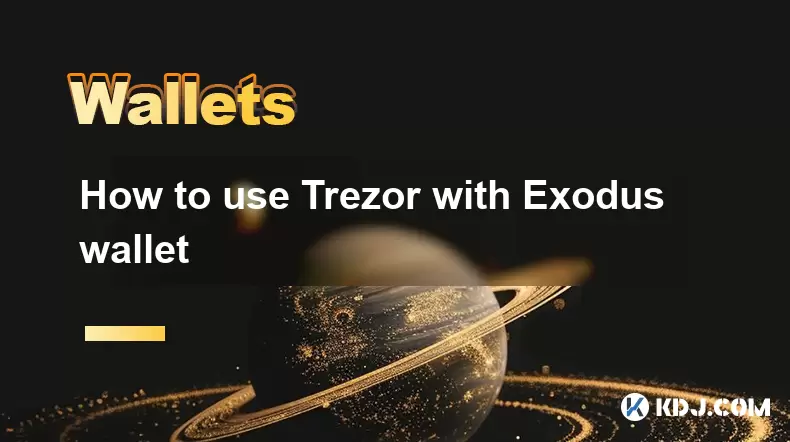
Exodus 지갑과 함께 Trezor를 사용하는 방법
2025-07-09 00:49:34
Trezor 하드웨어 지갑을 Exodus 소프트웨어 지갑에 연결합니다 Exodus 지갑 과 함께 Trezor를 사용하려면 사용자는 하드웨어 지갑을 Exodus가 제공하는 소프트웨어 인터페이스에 연결해야합니다. 이 통합은 사용자 친화적 인 인터페이스를 통해 디지털 자산을...
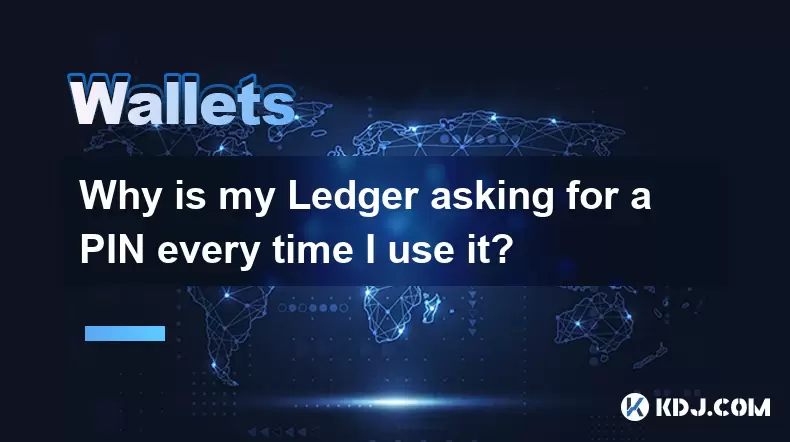
원장이 핀을 사용할 때마다 핀을 요구하는 이유는 무엇입니까?
2025-07-08 23:21:50
원장 장치의 PIN 목적 이해 PIN (개인 식별 번호) 은 모든 원장 하드웨어 지갑에 내장 된 중요한 보안 기능입니다. 주요 기능은 장치를 무단 액세스로부터 보호하는 것입니다. 원장을 처음 설정하면 Cryptocurrency holdings의 첫 번째 방어 계층 역할...
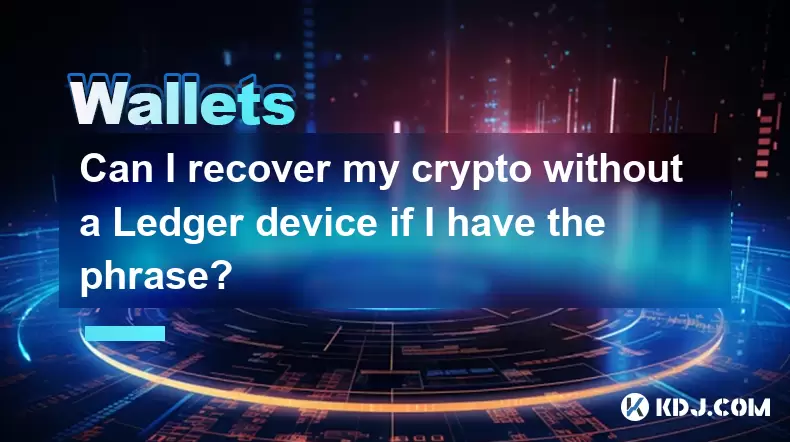
문구가있는 경우 원장 장치없이 암호화를 복구 할 수 있습니까?
2025-07-09 01:36:01
암호화 보안에서 복구 문구의 역할 이해 회복구가 있지만 원장 장치가 없는 경우 암호 화폐를 복구 할 수 있는지 궁금 할 것입니다. 짧은 대답은 예입니다. 복구 문구가있는 경우 원장 장치없이 암호화를 복구 할 수 있습니다 . 이는 종자 문구라고도하는 복구 문구가 인간이 ...
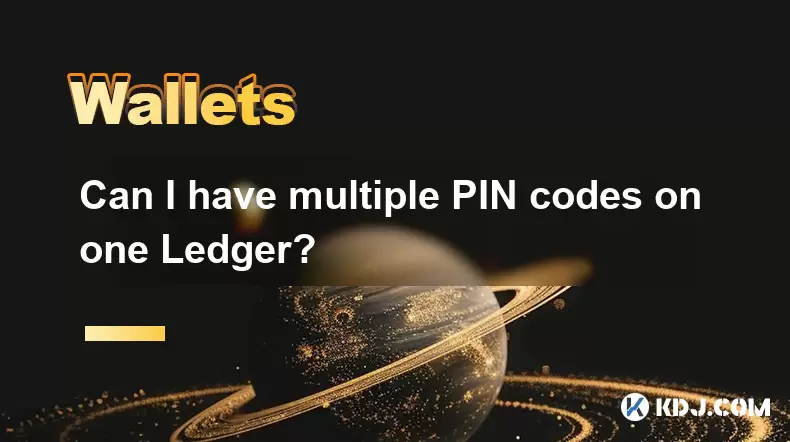
한 원장에 여러 핀 코드를 가질 수 있습니까?
2025-07-09 00:35:18
분산 거래소의 기본 이해 (DEXS) 분산 교환 또는 DEX는 중앙 권한없이 운영되는 유형의 암호 화폐 거래 플랫폼입니다. 기존 중앙 집중식 거래소 (CEX)와 달리 DEXS는 사용자가 자금을 거래소 자체에 입금 할 필요없이 지갑에서 직접 거래 할 수 있도록 허용합니다...
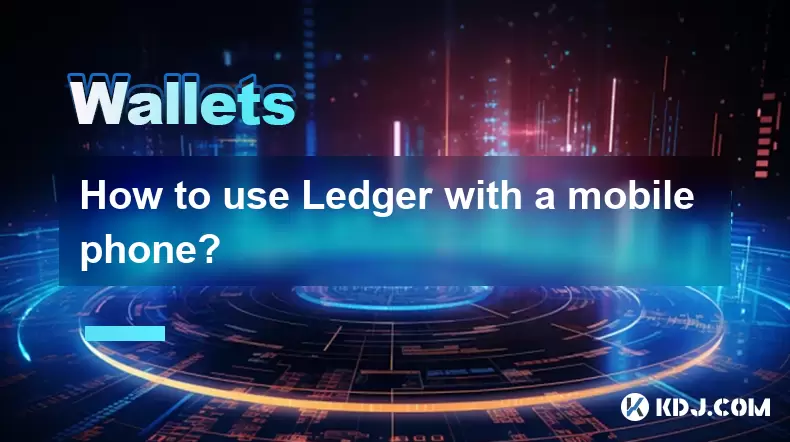
휴대폰으로 원장을 사용하는 방법?
2025-07-08 22:49:45
원장 하드웨어 지갑을 모바일 장치에 연결합니다 휴대폰으로 원장 하드웨어 지갑을 사용하면 이동 중에 암호 화폐를 관리하는 안전하고 편리한 방법이 제공됩니다. 시작하려면 모바일 장치가 필요한 요구 사항을 충족하는지 확인하십시오 : Android 8.0 이상 또는 iOS 1...

트레 조의 암호를 잊어 버리면 어떻게됩니까?
2025-07-09 03:15:08
Trezor 암호화의 역할 이해 Trezor 하드웨어 지갑을 사용하는 경우 복구 시드 이상의 추가 보안 계층으로 암호를 설정했을 수 있습니다. 장치와 함께 제공되는 12 또는 24 단어 복구 문구와 달리 Trezor 암호는 숨겨진 지갑 수정 자처럼 작용합니다. 입력하면...

Exodus 지갑과 함께 Trezor를 사용하는 방법
2025-07-09 00:49:34
Trezor 하드웨어 지갑을 Exodus 소프트웨어 지갑에 연결합니다 Exodus 지갑 과 함께 Trezor를 사용하려면 사용자는 하드웨어 지갑을 Exodus가 제공하는 소프트웨어 인터페이스에 연결해야합니다. 이 통합은 사용자 친화적 인 인터페이스를 통해 디지털 자산을...

원장이 핀을 사용할 때마다 핀을 요구하는 이유는 무엇입니까?
2025-07-08 23:21:50
원장 장치의 PIN 목적 이해 PIN (개인 식별 번호) 은 모든 원장 하드웨어 지갑에 내장 된 중요한 보안 기능입니다. 주요 기능은 장치를 무단 액세스로부터 보호하는 것입니다. 원장을 처음 설정하면 Cryptocurrency holdings의 첫 번째 방어 계층 역할...

문구가있는 경우 원장 장치없이 암호화를 복구 할 수 있습니까?
2025-07-09 01:36:01
암호화 보안에서 복구 문구의 역할 이해 회복구가 있지만 원장 장치가 없는 경우 암호 화폐를 복구 할 수 있는지 궁금 할 것입니다. 짧은 대답은 예입니다. 복구 문구가있는 경우 원장 장치없이 암호화를 복구 할 수 있습니다 . 이는 종자 문구라고도하는 복구 문구가 인간이 ...

한 원장에 여러 핀 코드를 가질 수 있습니까?
2025-07-09 00:35:18
분산 거래소의 기본 이해 (DEXS) 분산 교환 또는 DEX는 중앙 권한없이 운영되는 유형의 암호 화폐 거래 플랫폼입니다. 기존 중앙 집중식 거래소 (CEX)와 달리 DEXS는 사용자가 자금을 거래소 자체에 입금 할 필요없이 지갑에서 직접 거래 할 수 있도록 허용합니다...

휴대폰으로 원장을 사용하는 방법?
2025-07-08 22:49:45
원장 하드웨어 지갑을 모바일 장치에 연결합니다 휴대폰으로 원장 하드웨어 지갑을 사용하면 이동 중에 암호 화폐를 관리하는 안전하고 편리한 방법이 제공됩니다. 시작하려면 모바일 장치가 필요한 요구 사항을 충족하는지 확인하십시오 : Android 8.0 이상 또는 iOS 1...
모든 기사 보기

























































































